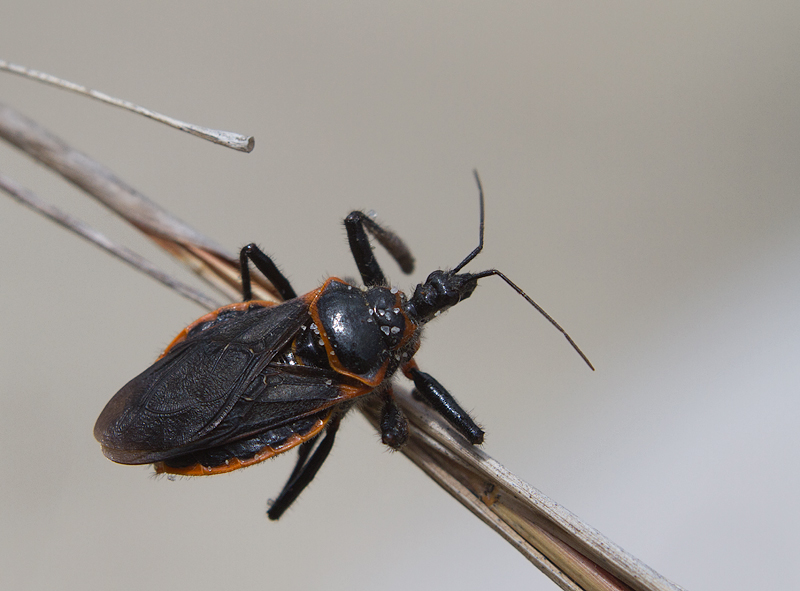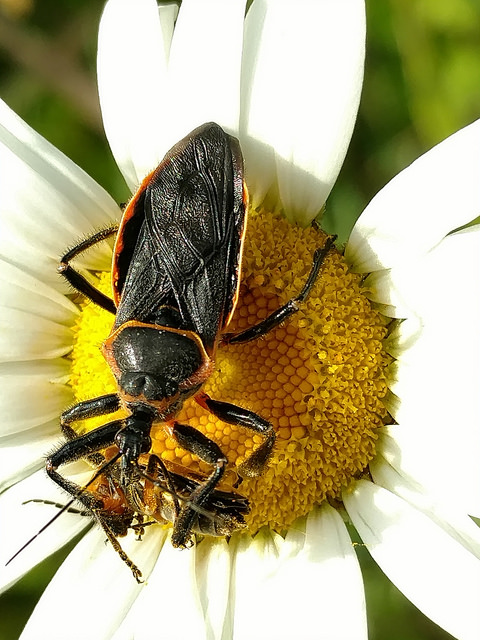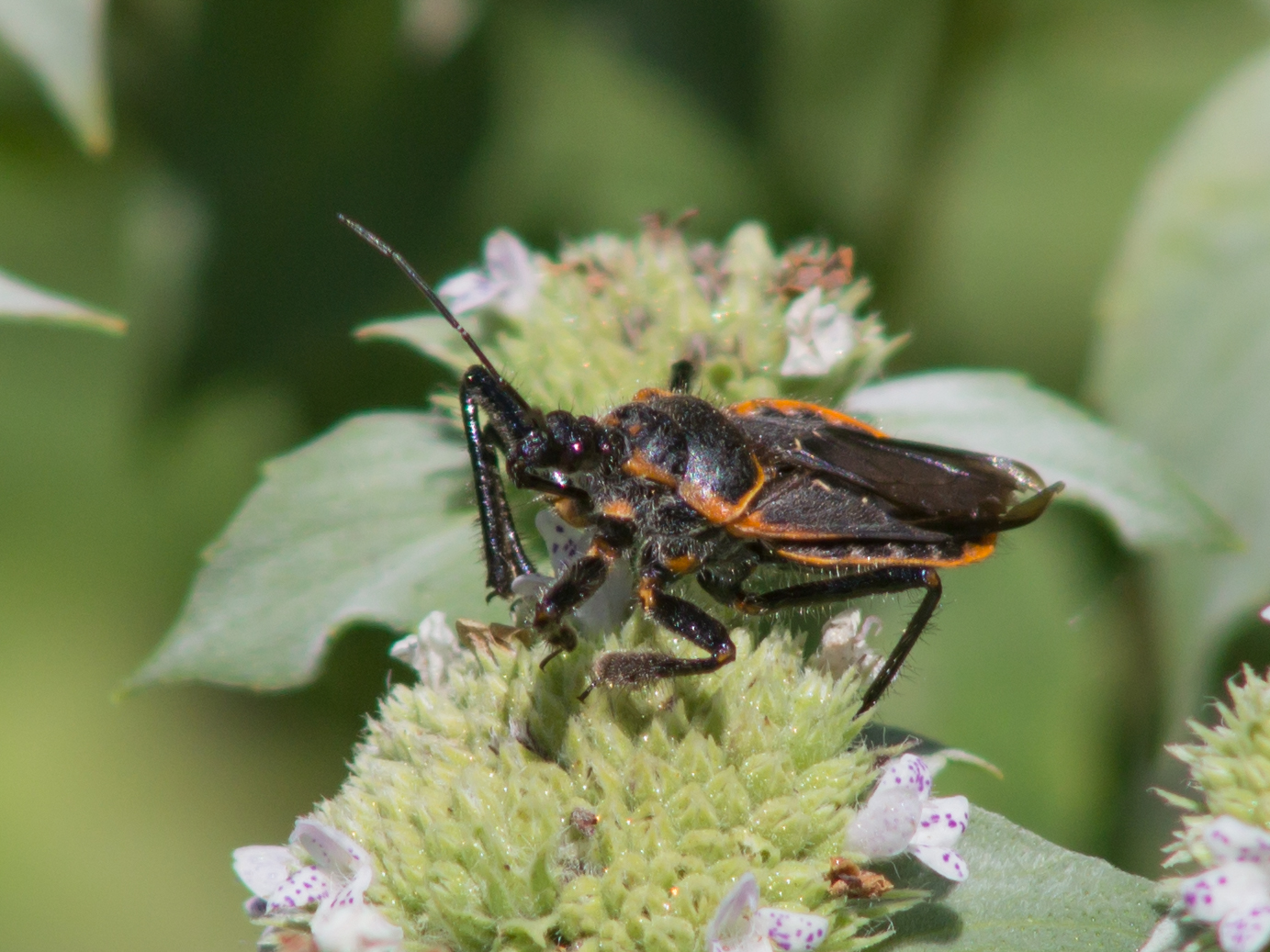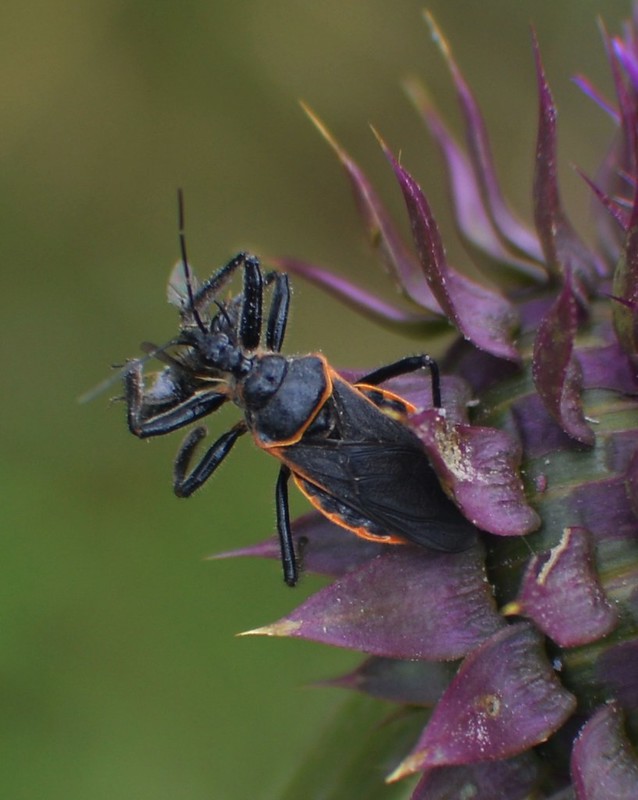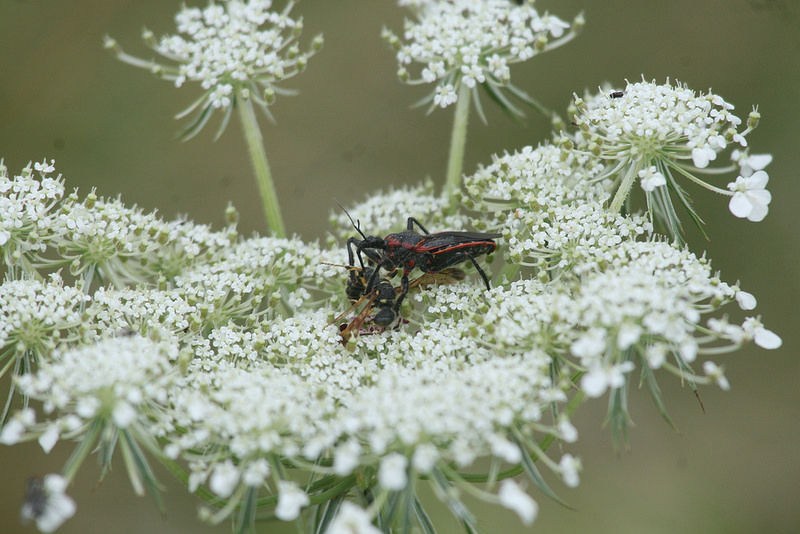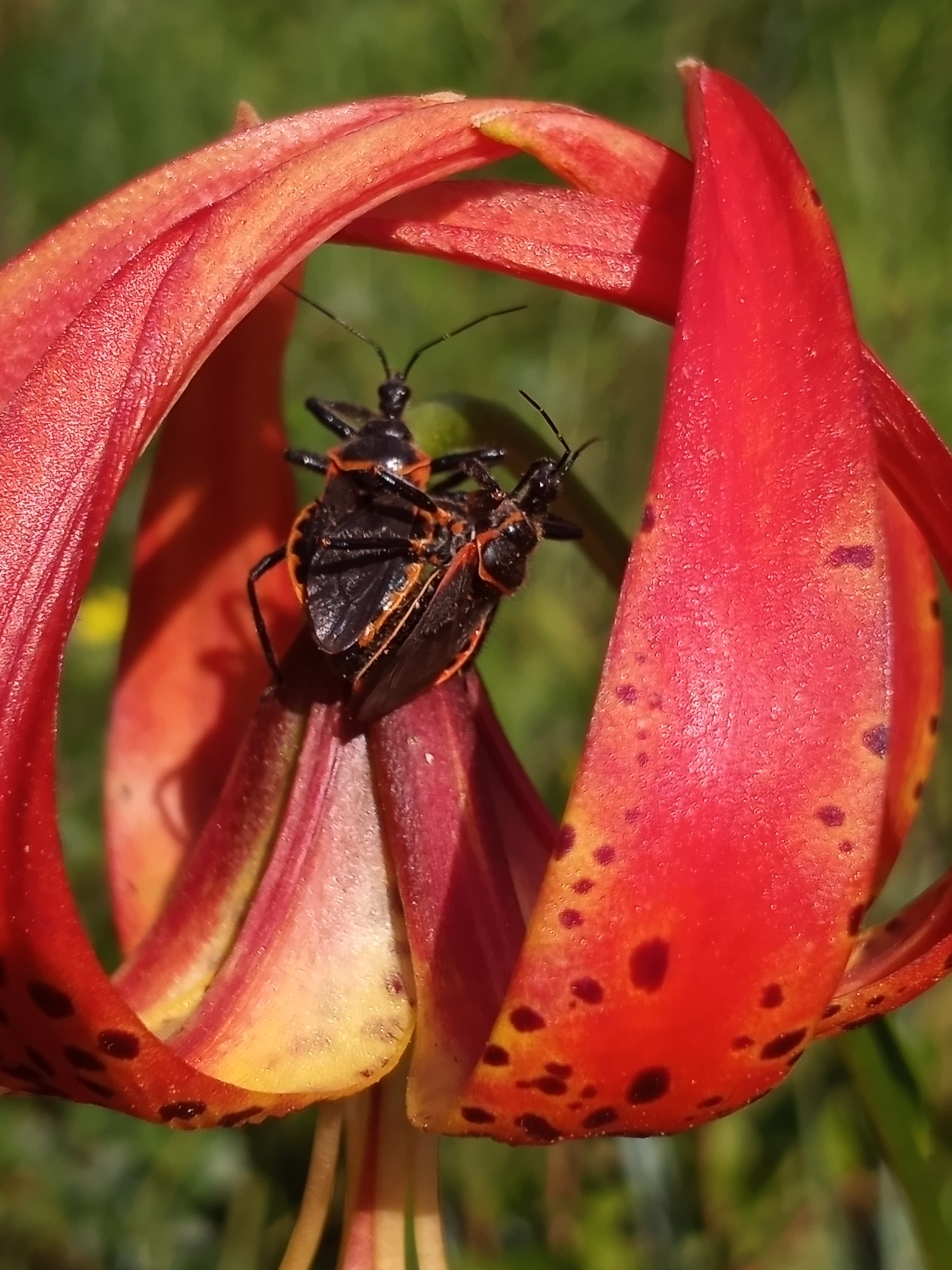Map Snapshot













30 Records
Relationships
"This insect pounces on Honey Bees and other pollinating insects. It holds the captive in its powerful legs, thrusts its cutting beak into the victim's back, injects an immobilizing digestive agent, then sucks out the body juices" (The Audubon Society Field Guide to North American Insects and Spiders).
Seasonality Snapshot
Source: Wikipedia
| Apiomerus crassipes | |
|---|---|

| |
| Scientific classification | |
| Domain: | Eukaryota |
| Kingdom: | Animalia |
| Phylum: | Arthropoda |
| Class: | Insecta |
| Order: | Hemiptera |
| Suborder: | Heteroptera |
| Family: | Reduviidae |
| Genus: | Apiomerus |
| Species: | A. crassipes
|
| Binomial name | |
| Apiomerus crassipes | |
Apiomerus crassipes, the bee assassin, is an insect that feeds on bees and ants.[2] It is found throughout North America.[3] Bee assassins can fly, and stalk flowering plants that are visited by bees, flies, and other pollinating insects. Bee assassins are usually dark in color with yellow or red markings on the sides of the abdomen, and are about 3/4 in long.
The bee assassins' fore tibiae are coated with a sticky resin to aid in prey capture.
References
[edit]- ^ "Apiomerus crassipes". Integrated Taxonomic Information System.
- ^ Handbook of biological control: principles and applications of biological control |T. S. Bellows |Academic Press
- ^ Tanya M. So (2002-01-01). "Common trail insects of Big Bend National Park" (PDF). Texas Tech University. Archived from the original (PDF) on 2011-07-20.
